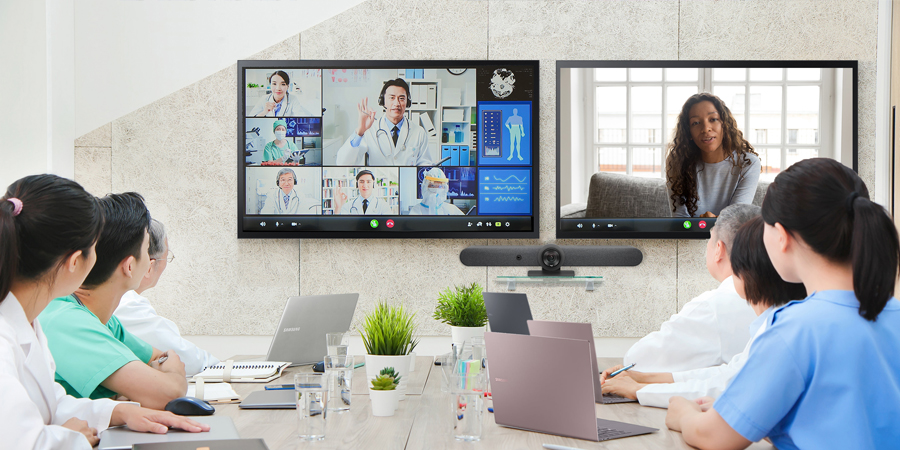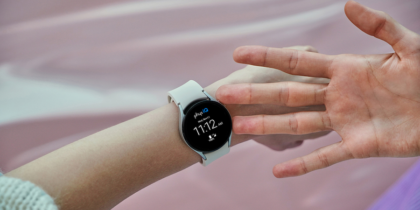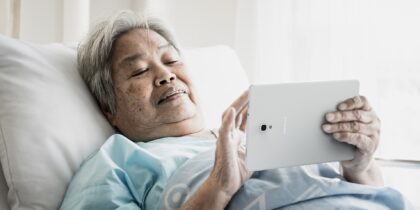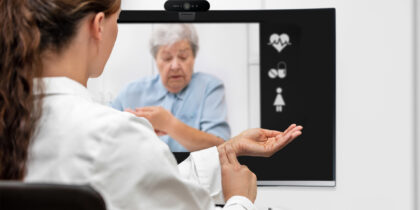Virtual care was established in many large healthcare facilities before COVID-19 changed the world. By demonstrating the feasibility of telehealth, the pandemic dramatically advanced adoption by patients and providers across the majority of healthcare institutions.
Patients are particularly enamored. A 2022 J.D. Power study found that 67 percent of 2022 respondents reported using telehealth within the past year, up from 37 percent in 2019. Notably, 94 percent of telehealth users said they’d use it again. In November 2021, 55 percent of patients responding to a McKinsey survey said they were more satisfied with virtual appointments than with in-person ones.
Meanwhile, a 2022 American Medical Association (AMA) survey found that 93 percent of physicians said digital health tools can improve patient care, up from 85 percent in 2016. Telehealth visits topped their list of preferred tools.
A few challenges remain to universal adoption, including bandwidth limitations in rural communities, physician reimbursement and cross-state regulatory issues. But telehealth has established itself as a permanent way to deliver healthcare. Hospitals and health systems must be equipped to provide their staff and physicians with the tools to deliver state-of-the-art care both in person and remotely.
So, what technology is needed for telehealth? It depends on the use case.
Routine visits in which patients are at home and interact with their medical providers via computer, tablet or smartphone may be the most obvious use of telehealth, but it’s far from the only one.
Virtual rounding from anywhere
Telehealth gives the attending physician and other members of the care team the ability to make virtual rounds from down the hall or hundreds of miles away. During the pandemic, it minimized the use of personal protective equipment and allowed providers to make rounds even when patients were in isolation. Perhaps counterintuitively, it helped make visits more personal: Patients could see their provider’s unmasked face. Today, it allows health systems to improve workforce efficiency and readily adapt to changes, such as COVID-19 or RSV surges.
Samsung’s mobile telehealth solution helps make virtual rounding easy — whether it be via the hospital room’s smart TV or through the solution of a self-contained telehealth cart.
The in-room Samsung 4K QLED Smart Healthcare TV offers seamless access to remote consultations. And when they finish talking to providers, patients can avail themselves of an array of dynamic entertainment and educational programming.
Improve patient outcomes and facility resilience
Improve patient outcomes and facility resilience Download Now
Another option is to move the telehealth screen between patient rooms. Samsung’s S4 all-in-one webcam monitor can be easily mounted to any type of medical cart. It features a secure built-in pop-up HD camera, integrated microphone and built-in speakers. The 24-inch display is large enough to accommodate the video as well as electronic health record (EHR) data applications, with no need to toggle between various windows.
Making collaboration easy
That same S4 monitor, which can be quickly connected to a laptop, is ideal for a desk or cart. The attending physician, from their desk or exam room, can bring various team members together at the virtual bedside. Specialists, pharmacists, case managers, educators and others can interact with the patient and each other.
The monitor, with its built-in webcam and ease of use, also enables anytime collaboration among providers, from tumor board discussions to team huddles.
Gathering friends and family
Telehealth allows patients to connect with family and friends remotely when in-person visits are not possible.
“We saw how well this worked during the pandemic, but even when the patient is allowed in-person visitors, telehealth plays an important role,” explains Lisa Bohnsack, senior manager for business development within Samsung’s healthcare display division.
A patient in hospice care, for instance, can connect face-to-face with family and friends across the country; they can even gather remotely all at the same time.
Remote location, immediate solution
Hospitals are creating “command centers” to remotely monitor patients, from down the hall or across the state. Samsung’s CJ890 Series 49-inch curved monitors are ideal for this option: The ultra-wide curved monitor allows nurses to keep an eye on many patients at once. This streamlines workflow at a time when healthcare staffing is at a premium.
St. Luke’s health system in Idaho built a virtual care center in Boise, using CJ890 monitors to connect with patients and intensive care providers in smaller centers around the state. The 24/7 facility enables nurses to see and speak with patients. Because it’s an integrated telehealth solution, providers can access EHRs and review test results from their workstations. Specialists also use the virtual care stations to “meet” with patients and colleagues to review cases without leaving Boise.
In other cases, those doing the monitoring are just down the hall.
Nurse e-sitting
One nurse or another staff member can remotely monitor 25 or 30 rooms at a time from the desktop monitor. If a viewer notices something amiss, they can talk directly to the patient and notify the staff.
This approach, called “nurse e-sitting” or “telesitting,” was relatively uncommon before the pandemic. Today, staff shortages have made it a necessity, according to a 2022 HealthTech article. In fact, it can be life-saving.
Let’s say you have a patient, John, who is at risk for falls.
“If John tries to get out of bed, an alert comes up on screen. The nurse can then notify the staff to get him back into bed,” explains Karen Schweiger, senior business manager for Samsung’s healthcare display division. The nurse can also talk directly to John, let him know someone is coming and ask him not to stand up unassisted.
All about efficient communication
Healthcare teams need to be agile in monitoring and treating patients. Telehealth technology, deployed correctly, makes this possible. The drivers may change, but telehealth has become essential to care delivery. And telehealth works best when it facilitates clear, unencumbered communication between and among providers, staff, patients and caregivers.
Learn more about remote monitoring — including how it works, how it benefits healthcare providers and how to get started — with our free, comprehensive guide. And check out the array of Samsung healthcare display solutions, all of which can improve treatment outcomes and interlink medical team communications.










